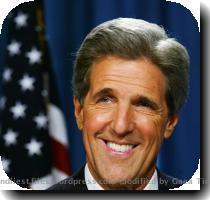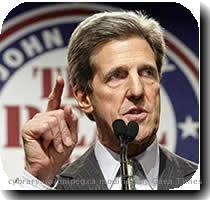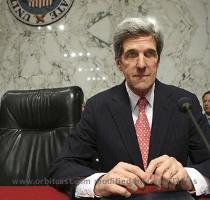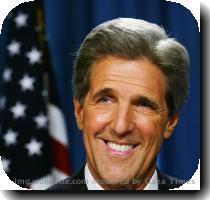Congress calls drilling execs to account for ‘cascade of failures’ behind Gulf oil spill
By H. Josef Hebert, APWednesday, May 12, 2010
Execs grilled on oil spill ‘cascade of failures’
WASHINGTON — Congress called BP and its drilling partners to account Tuesday for a “cascade of failures” behind the spreading Gulf oil spill, zeroing in on a crucial chain of events at the deep-sea wellhead just before an explosion consumed the rig and set off the catastrophic rupture.
In back-to-back Senate inquiries, lawmakers chastised executives of the three companies at the heart of the massive spill over attempts to shift the blame to each other. And they were asked to explain why better preparations had not been made to head off the accident.
“Let me be really clear,” Lamar McKay, chairman of BP America, told the hearing. “Liability, blame, fault — put it over here.” He said: “Our obligation is to deal with the spill, clean it up and make sure the impacts of that spill are compensated, and we’re going to do that.”
By “over here,” McKay meant the witness table at which BP, Transocean and Halliburton executives sat shoulder to shoulder. And despite his acknowledgment of responsibility, each company defended its own operations and raised questions about its partners in the project gone awry.
Lawmakers compared the calamity to some of history’s most notorious mishaps from sea to space in the first congressional inquiry into the April 20 explosion and so-far unstoppable spill. In the crowded hearing room, eight young activists sat in quiet protest, with black T-shirts saying, “Energy Shouldn’t Cost Lives.” Several wore black painted spots near their eyes to symbolize tear drops made from oil.
Said Sen. Jeff Bingaman, D-N.M., chairman of the Energy and Natural Resources Committee, “If this is like other catastrophic failures of technological systems in modern history, whether it was the sinking of the Titanic, Three Mile Island, or the loss of the Challenger, we will likely discover that there was a cascade of failures and technical and human and regulatory errors.”
The corporate finger pointing prompted an admonishment from Republican Sen. Lisa Murkowski of oil-rich Alaska that “we are all in this together” in trying to shut off the oil and find a safer way to exploit vital energy.
“This accident has reminded us of a cold reality, that the production of energy will never be without risk or environmental consequence,” she said. Still, she said, “there will be no excuse” if operators are found to have violated the law.
Failure to cap the leak was intensifying impatience, from the contaminated Gulf waters to the White House.
“The president is frustrated with everything, the president is frustrated with everybody, in the sense that we still have an oil leak,” spokesman Robert Gibbs said. “That includes us, that includes everybody that’s involved with this.”
After an icelike buildup thwarted a plan over the weekend to siphon off most of the leak using a huge, 100-ton containment box, a second, smaller box was lowered into the water late Tuesday near the blown-out well. The box was being slowly submerged to the seabed but it won’t be placed over the spewing well right away. BP spokesman Bill Salvin said engineers want to make sure everything is configured correctly and avoid an ice buildup.
Salvin said undersea robots will position the box over the gusher by Thursday.
Ramifications from the environmental crisis spilled over into landmark climate change and energy legislation that is coming out Wednesday. The bill from Sens. John Kerry and Joe Lieberman proposes letting coastal states veto drilling projects off the shores of neighboring states if they can show the potential for harm.
The impact is being felt in the realm of regulation, too. Interior Secretary Ken Salazar proposed splitting his department’s Minerals Management Service in two to make safety enforcement independent of the service’s other main function — collecting billions in royalties from the drilling industry.
Senators sought assurances that BP PLC will pay what could amount to billions of dollars in economic and environmental damages. McKay repeatedly said his company would pay for cleanup costs and all “legitimate” claims for damages, and not try to limit itself to an existing federal limit of $75 million on such damages.
BP was the exploratory well’s owner and overall operator, Transocean the rig’s owner and Halliburton a subcontractor that was encasing the well pipe in cement before plugging it in anticipation of future production.
The explosion is thought to have begun with a surge of methane gas from deep within the well, and while the cause is still under early investigation, the testimony Tuesday provided some insight into what might have been involved.
Republican Sen. Jeff Sessions of Alabama grew frustrated grilling the executives on why engineers replaced a heavy “mud” compound in the well with much lighter sea water — thereby reducing downward pressure on the oil — when they were temporarily capping the site for future exploitation. He quoted an oil rig worker saying, “That’s when the well came at us, basically.”
“I’m not familiar with the individual procedure on that well,” BP’s McKay said.
Steven Newman, Transocean’s president and CEO, and Halliburton executive Tim Probert repeatedly told Sessions they did not know how often sea water instead of the compound was used to seal Gulf wells.
“Well, you do this business, do you not?” the senator demanded. “You’re under oath. I’m just asking you a simple question.”
New Jersey Democrat Frank Lautenberg remarked in the day’s other hearing: “The conclusion that I draw is that nobody assumes the responsibility.”
McKay said that a key piece of safety equipment, the aptly named blowout preventer, had failed to work and made it clear it was owned by Transocean. “That was the fail safe in case of an accident,” said McKay.
But Transocean’s Newman said offshore production projects “begin and end with the operator, in this case BP” and that his company’s drilling job was completed three days before the explosion and there’s “no reason to believe” the blowout protector mechanics failed.
And Newman wanted senators to know Halliburton was in the process of pouring cement into the pipe to plug it but the final well cap had not yet been put in place.
Halliburton’s Probert said his company followed BP’s drilling plan, federal regulations and industry practices.
Associated Press writers Matthew Daly and Frederic J. Frommer in Washington, and Harry R. Weber from the site of the oil leak on the Gulf of Mexico, contributed to this report.
Tags: Accidents, Environmental Concerns, Government Regulations, Industry Regulation, John Kerry, North America, United States, Washington





